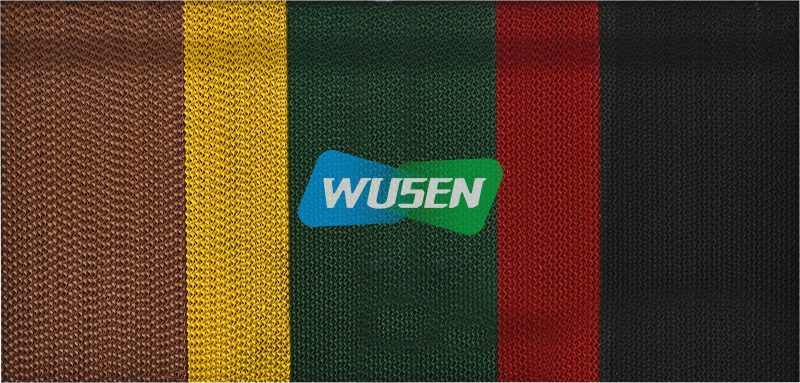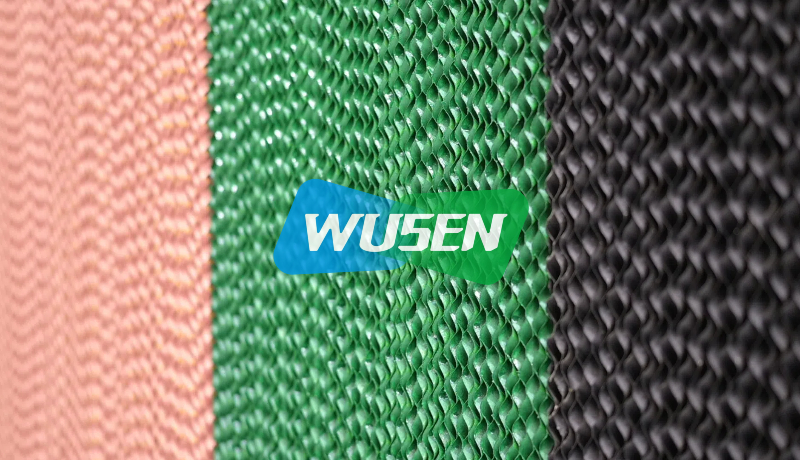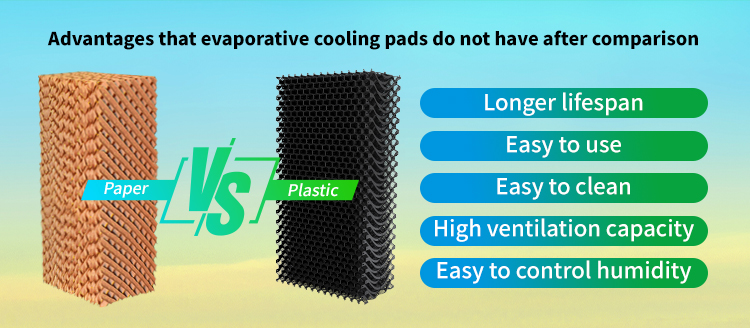Evaporative cooling pads are a common evaporative cooling medium

Working Principle
Paper evaporative cooling pads reduce air temperature by evaporating water. When air passes through a moistened paper pad, the water evaporates and absorbs heat, cooling the air.
The porous structure of the paper pad increases the contact area between air and water, improving evaporation efficiency.
Material properties
Material: Usually made of special kraft paper or wood pulp paper, treated with anti-corrosion and anti-mildew.
Structure: Paper cooling pads are usually designed in a honeycomb or corrugated shape to maximize surface area and air contact.
Water absorption: Paper materials have good water absorption and can distribute water quickly and evenly.
Environmental protection: Paper cooling pads are biodegradable and environmentally friendly.
Advantages
Efficient cooling: The porous structure and high water absorption of paper cooling pads make it highly efficient in evaporation and have a significant cooling effect.
Lightweight and easy to install: Paper materials are lightweight and easy to carry and install.
Low cost: Paper cooling pads have a low manufacturing cost and are suitable for large-scale applications.
Air filtration: When air passes through the paper pad, dust and impurities are filtered, improving air quality.

Disadvantages
Low durability: Compared with plastic cooling pads, paper cooling pads have a shorter service life and are easily damaged by long-term humid environments.
High maintenance requirements: Need to be replaced regularly, especially in areas with hard water or more impurities, prone to scaling or clogging.
Not suitable for high humidity environments: In high humidity environments, evaporation efficiency will be significantly reduced.
Application scenarios
Agriculture: Used for greenhouse cooling to provide a suitable growth environment for crops.
Industry: Used for cooling in factory workshops, warehouses and other places.
Home use: Small evaporative cooling equipment can be used for home cooling.
Commercial: Used in outdoor activity venues, restaurants, etc.
Maintenance and care
Regularly check the moisture of the cooling pad to ensure uniform water supply.
Clean or replace the cooling pad regularly to prevent scale and impurities from clogging the pores.
In winter or when not in use, it is recommended to remove the cooling pad and dry it to extend its service life.
Purchase suggestions
Choose a cooling pad of appropriate thickness and size according to the usage scenario.
Choose high-quality paper materials that have been treated with anti-corrosion and anti-mildew.
Ensure that the pores of the cooling pad are uniform to ensure good ventilation and evaporation.
If the water quality is hard, it is recommended to use softened water or clean the cooling pad regularly to reduce scale accumulation.

